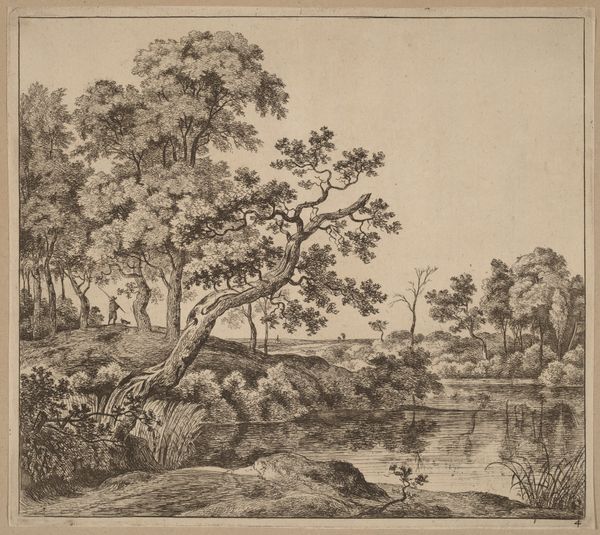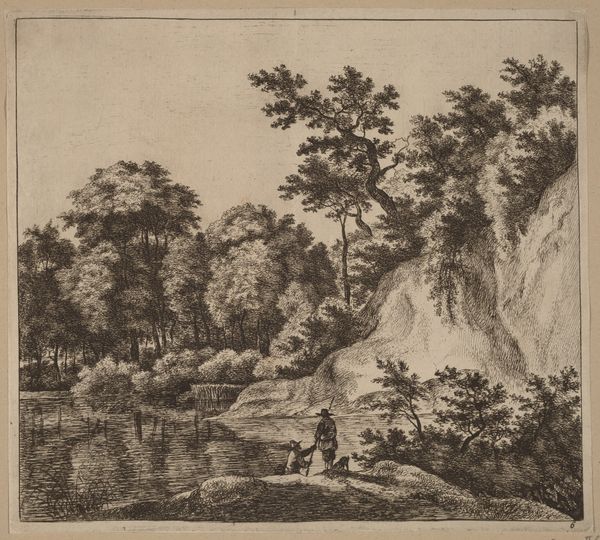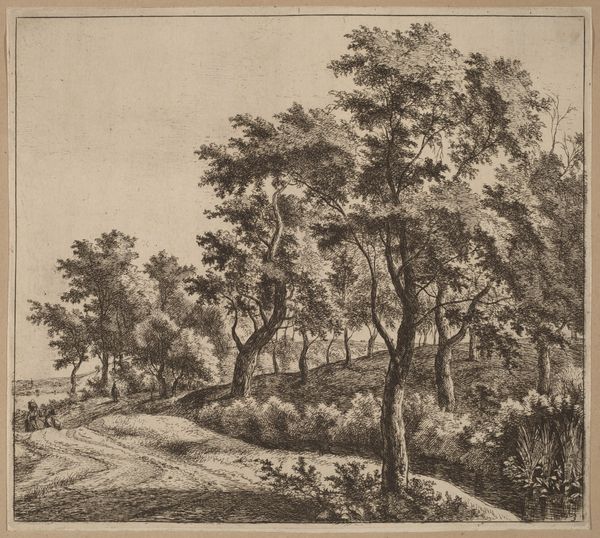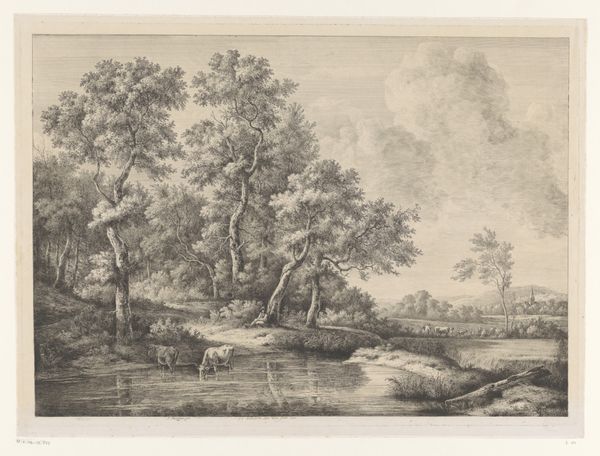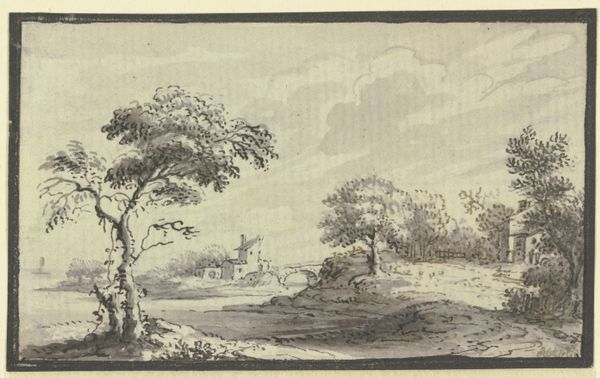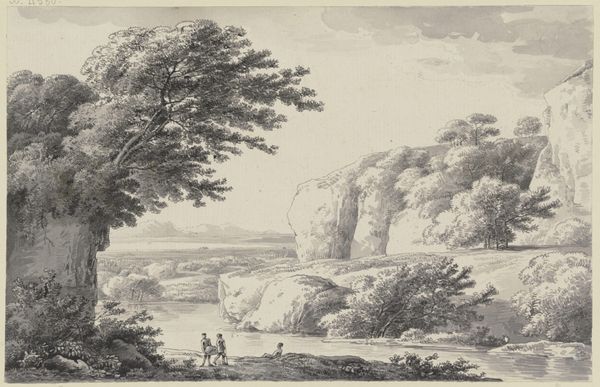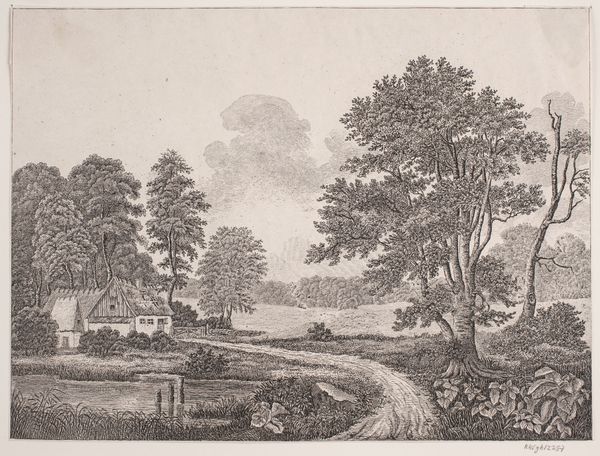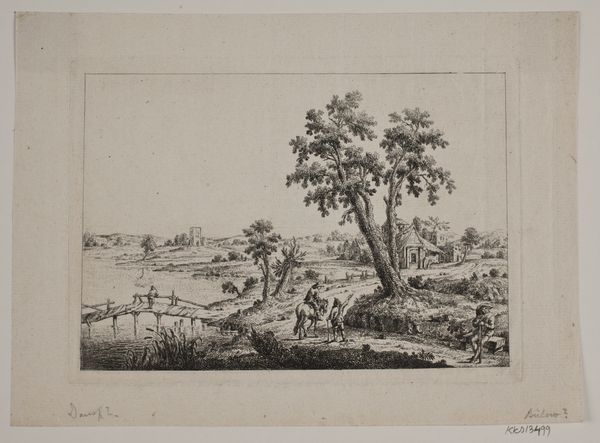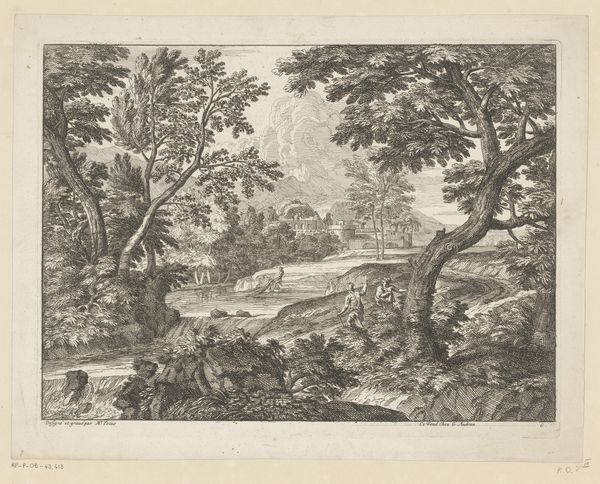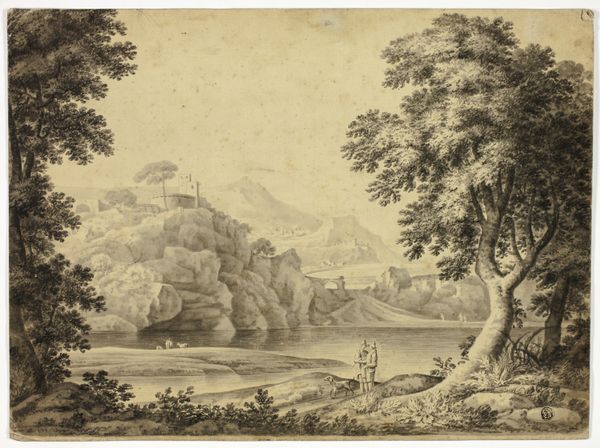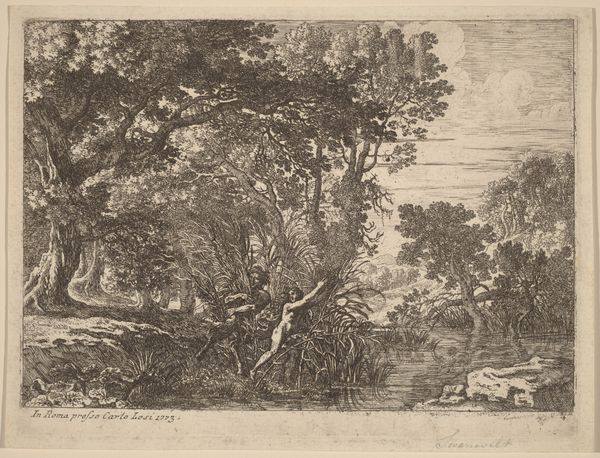
print, etching
#
baroque
#
ink painting
# print
#
etching
#
landscape
#
genre-painting
Copyright: National Gallery of Art: CC0 1.0
Curator: Let's turn our attention now to "Landscape with Four Trees", an etching by Jan Hackaert. Editor: It evokes a tranquil scene. The almost monochromatic palette enhances a sense of serenity. Tell me more about Hackaert’s approach to materials here. Curator: Well, the print medium itself, etching, is quite telling. It allowed Hackaert to mass produce this imagery and it really highlights how landscapes became increasingly popular commodities for a growing middle class in that era. We see here the results of acid-biting into the metal plate, allowing for the transfer of the image onto paper and wide distribution. Editor: Interesting! The trees definitely become symbolic anchors here. They stand as a metaphor for permanence amidst what would have been rapidly changing social and economic realities. They serve as almost meditative icons of the natural world for buyers and owners who might be navigating a world that's becoming less and less natural. Curator: The act of choosing this scene – these specific trees along the river bank with figures – and then reproducing it for wider consumption, elevates what was considered "commonplace". What labor went into preparing the plate, who printed this, where and for whom was it sold… These things invite an investigation of social values attached to these prints and their status in 17th century Europe. Editor: And that emphasis on labor leads to those questions around status and reception you raise. The trees themselves are positioned almost like figures, the artist emphasizing their unique character with almost portrait-like individuality and then we can wonder about the identities of those human figures. We almost immediately connect them to those trees, forming almost narrative scenarios… were they hunters? Merchants? Did the buyers create their own interpretations? Curator: Precisely! And with this print ending up in the hands of the new merchant class, it could imply an appeal to the emerging ethos of ownership and possession of nature through art, signaling status and good taste by incorporating such landscape art into the private home. Editor: It's striking how even in this relatively simple scene, so much emotional weight, cultural memory, and aspiration can be woven into a single print. The material process created new audiences. Curator: Indeed. Etching becomes more than a technique; it's a means to democratize access to idealized visions of nature, filtered and refined for specific social echelons. It reshapes art, literally.
Comments
No comments
Be the first to comment and join the conversation on the ultimate creative platform.
